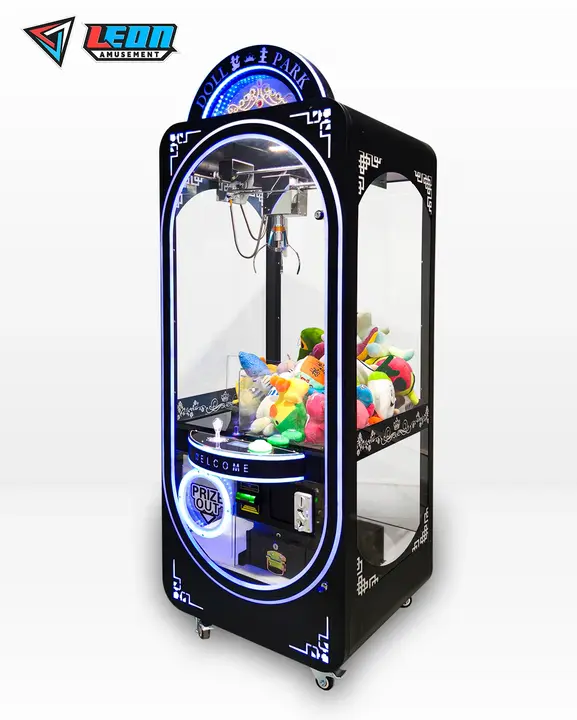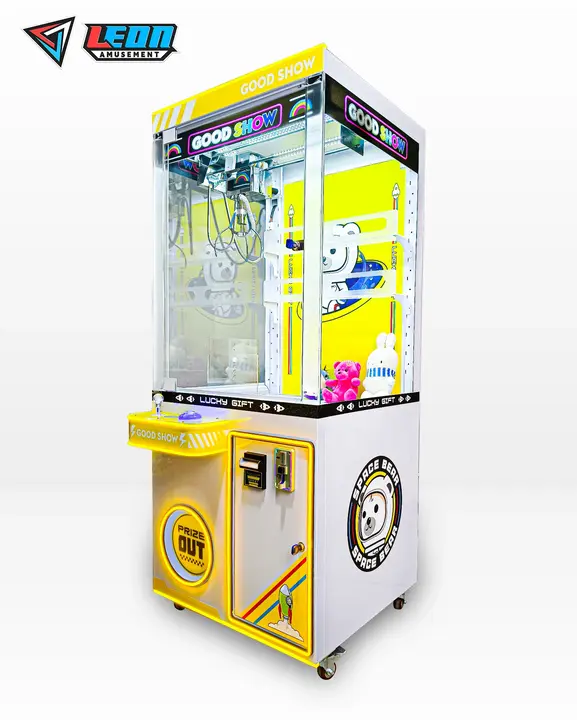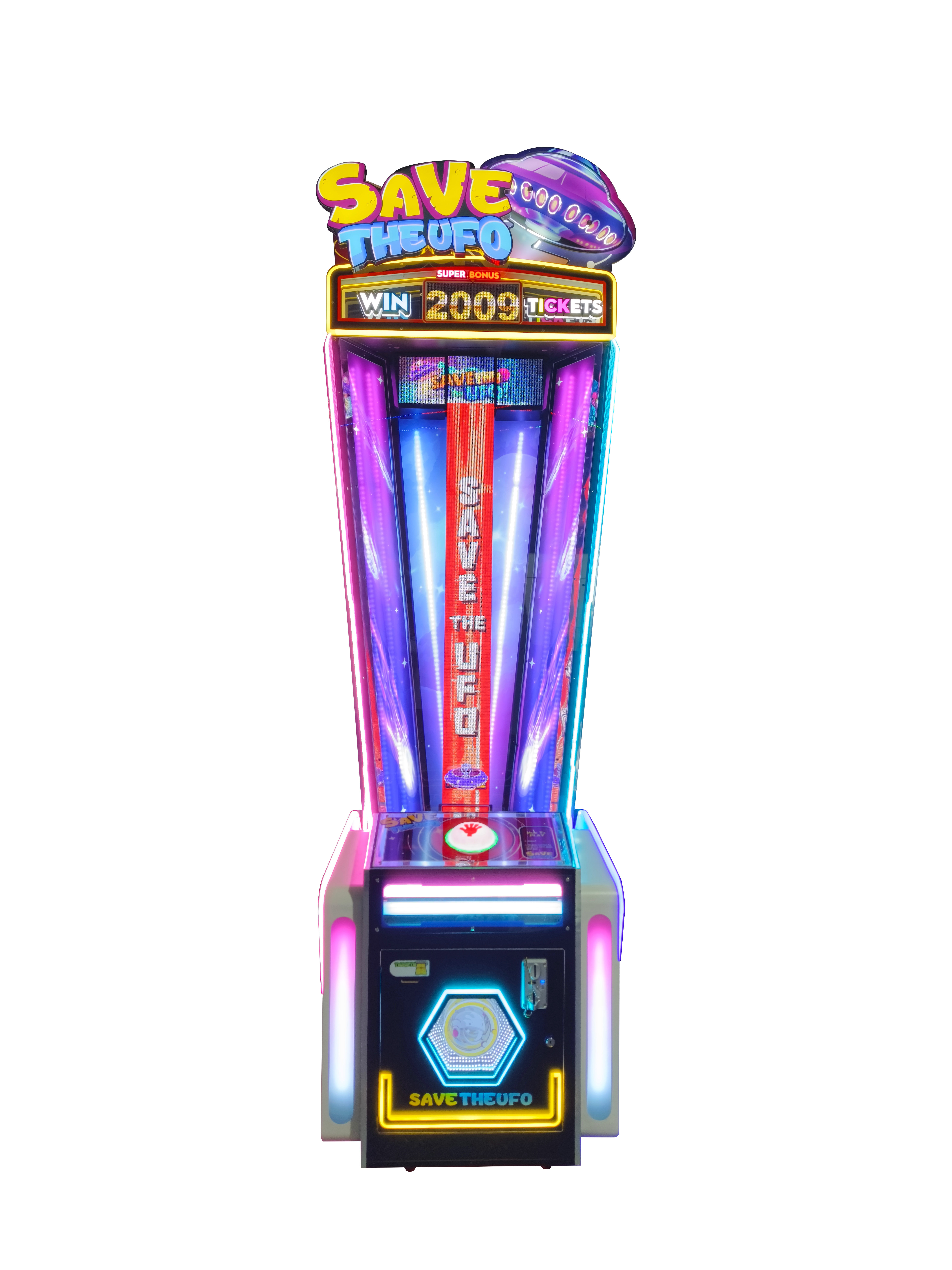Claw machines increase customer dwell time by up to 25%, encouraging repeat play. They are popular in arcades, malls, and events, often stocked with customizable prizes to match the theme. By adjusting the claw strength and payout frequency, operators can control profitability, with some machines boosting revenue by 20%. Additionally, claw machines are often used for promotional purposes, drawing in crowds and enhancing brand visibility.
Table of Contents
ToggleThe essence of claw machine entertainment
The success rate of a claw machine is generally 5%-10%, depending on how greedy the business owner might be. If a claw machine has a 6% success rate, for instance, then only 6 out of every one hundred grabs end in a successful win, and an average number of attempts per player to get enough skill tickets or other rewards is about seventeen. If each player spends twenty per grab, the average cost per hit is only 85 yuan, without accounting for how much money can be grabbed in one place for goods with an original price of about five to ten.
In real terms, a venue doing 50-100 customers per day and averaging the national average of 5-7 grabs per person is low — you could see as much as several hundred visits per game on a single day. If anyone is lucky, how much money can you grab in a day for 5 dollars? A grab of this size can generate between 1250 and 3500 yuan per day. On the other hand, prizes are generally in the 150-500 yuan range, with three players at each claw machine every day clearing 1000-3000 net profit per unit daily, from an over eighty percent operating margin.
For a venue with 10 machines, it would earn a total of between ¥12,500 and ¥35,000 every day. The price of each machine is around 10,000 to 30,000 yuan, and since this cost can be recouped in less than a month, they are quite profitable, particularly if the machines are placed in high-traffic areas like shopping malls or amusement parks.

Diversified player experience
Based on market research, 72% of players say their primary motivation is the challenge, not just winning prizes. It also shows that 60% of claw machine players make greater than or equal to five attempts each time, making it a high-engagement entertainment activity.
Segmenting the player groups helps us appreciate player behavior by category. Tech products or collectible figurines are gifts targeted at 18–25-year-old players, who are some of the most valuable customers. In Japan, a claw machine company surveyed 1000 enthusiasts and discovered nearly two-thirds were willing to pay more than 15 dollars for a specific brand of figurine — prizes like these usually retail at about $25. With these special reward offerings, the average player spending for the company increased from 8 yuan to 15, and overall revenue grew by an impressive 87%.
Adding more machines is a good strategy, as those with electronic screens and network connectivity can make players stay 30% longer on average. Data from a claw machine at an entertainment venue showed how average attempts per player increased from 4 to 6, encouraging repeat spending. After that, the venue’s income increased by 25%, adding over 300 thousand yuan to its annual revenue.

Business profit model
The profit model of claw machines does not only depend on controlling the cost of equipment, but also on setting success rates and managing prize allocation. The hardware cost of a claw machine varies from 10,000 to 30,000 yuan depending on the configuration and network features. The initial prize cost is low, with each prize costing about 3-10 yuan. Once businesses correctly adjust success rates, they can make much more from players than the prize cost.
For example, a game hall with 10 claw machines, each making the same amount of money (USD $300 per day), would generate around 60,000 yuan in monthly revenue collectively. The prize replenishment cost would be 30,000 yuan per month, and equipment maintenance would cost 5,000 yuan, excluding other expenses like bank fees. The net profit would be around 565,000 yuan per month. Annual revenue would reach about 6.78 million yuan, with net profit making up more than 90% of total income.
Businesses only need to charge enough to lure people in with free-to-play tactics—such as loot boxes and other psychological manipulations—to make them spend more than the $60 a game might cost at retail. Further analysis reveals that optimizing success rates leads to higher average spending per player. If the win rate is 8%, and each prize costs an average of 5 dollars, each player’s actual consumption could increase to about 62.5 yuan if they are lucky. Even with such prize costs, businesses are set to achieve an 85% gross profit margin. This precise setting of success rates ensures that players spend significantly more than the prize costs, making the business more profitable.








